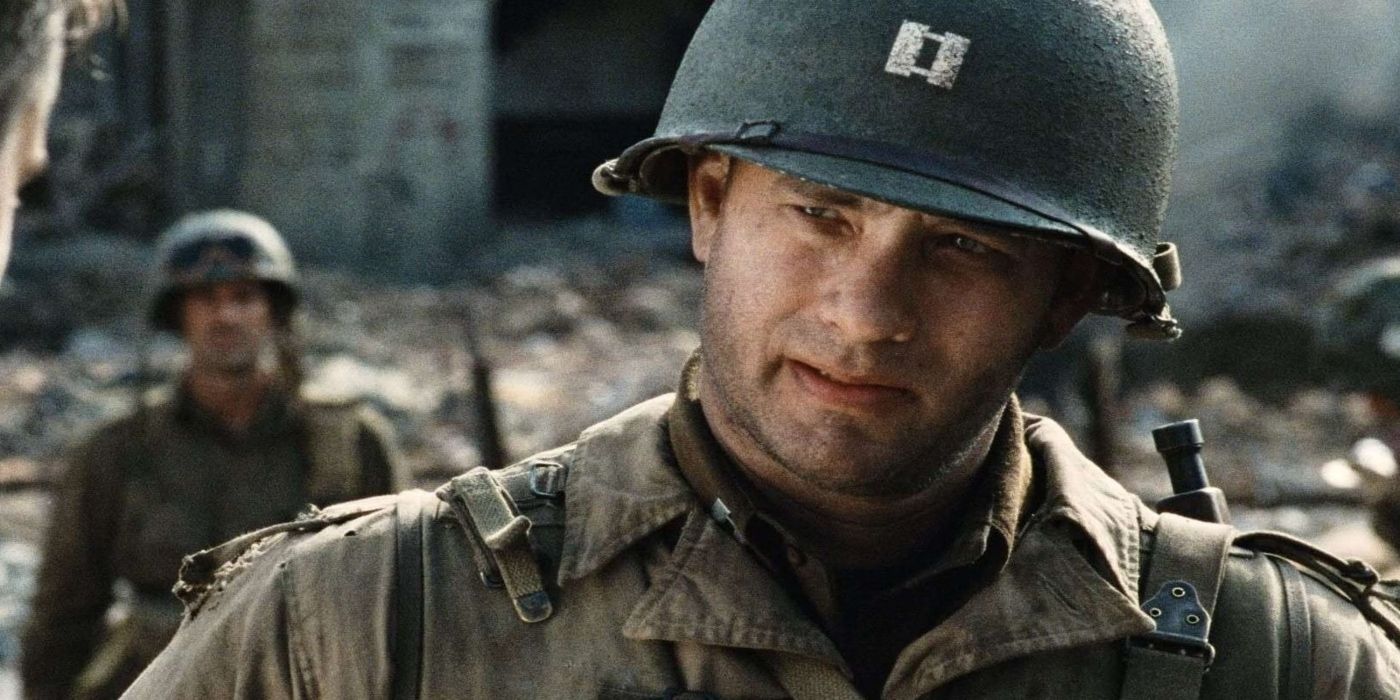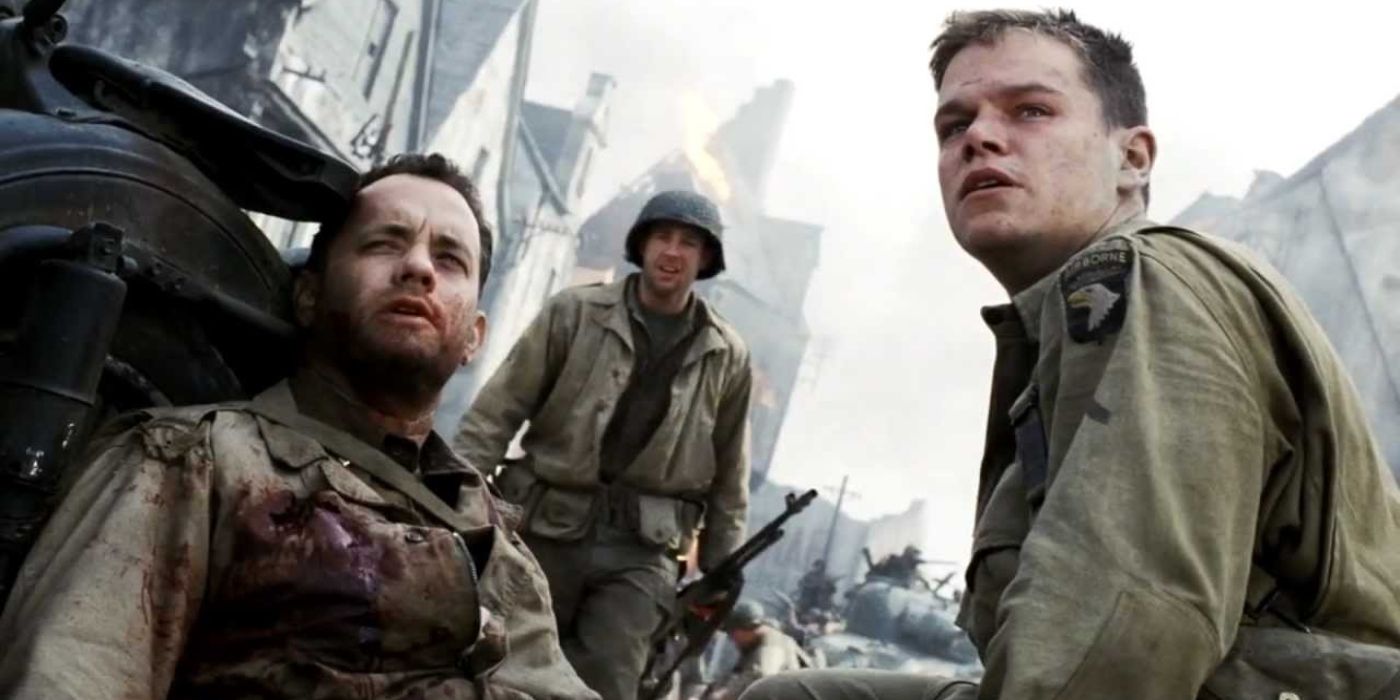Saving Private Ryan is considered one of the best World War II movies ever made. Released in 1998, Saving Private Ryan was nominated for multiple Academy Awards, and director Stephen Spielberg won both the Oscar and the Golden Globe for best direction. Saving Private Ryan was highly praised for its accuracy and intensity, and ultimately preserved in the United States National Film Registry as “culturally, historically, or aesthetically significant” in 2014. Not everything in Saving Private Ryan was accurate, however.
Numerous observers have pointed out details in Saving Private Ryan that were wrong alongside larger, more glaring errors. Historian and battlefield guide Mat McLaughlan detailed what Saving Private Ryan got wrong and how it could have improved on overall accuracy.
‘Saving Private Ryan’ Was Too Focused on Americans and Not on the Whole of the Allied Forces
When Allied troops stormed the beaches of Normandy on June 6, 1944, some 160,000 soldiers from countries landed on Omaha, Utah, Gold, Juno, and Sword beaches. Americans, Canadians, and British troops made up the majority of the forces, but there were additional Allied nations represented. These included Norway, Australia, France, Poland, the Netherlands, and Belgium, as well as Denmark, New Zealand, Luxembourg, Greece, and Czechoslovakia.
Despite Saving Private Ryan being an “American film telling an American Story,” as McLachlan put it, this was dismissive of other contributions:
“[At] one stage two U.S. officers are depicted denigrating the efforts of British troops and suggesting they were ‘taking their time’ capturing Caen, one of the key towns in the landing sector… In reality, the British were fighting a grueling six-week campaign to capture the town.”
This comment can be compared to another remark in Saving Private Ryan that doesn’t reflect what took place in June 1944. When the movie “perpetuates the myth that no Allied [tanks] successfully landed at Omaha Beach,” it was incorrect.
The emphasis on American forces is accompanied by the focus on the army in Saving Private Ryan. The role of the navy, namely its transport of artillery forces, isn’t fully recognized: “The main reason U.S. troops were successful in getting off Omaha Beach was that Navy ships came in close to shore and blasted the German defenses to pieces.”
The Ages of the Characters in ‘Saving Private Ryan’ Don’t Line up With What Happened on D-Day
Nobody can deny the stellar ensemble cast in Saving Private Ryan. Led by Tom Hanks as Captain John H. Miller, actors like Ted Danson, Edward Burns, Tom Sizemore, and Matt Damon were well past the average age of actual soldiers when they appeared in the movie.
When Saving Private Ryan was filmed, Hanks and Danson were in their 40s, Sizemore was in his 30s, and Burns and Damon were on the cusp of turning 30. Mat McLachlan noted, “The average age of U.S. soldiers that landed on D-Day was 22, and the 2nd Rangers, being an elite unit, would likely have had a larger share of 19-and 20-year-olds.”
The characters in Saving Private Ryan were not immune from making mistakes of their own, another detail McLachlan pointed out. There are numerous mistakes involving “weapons and their use” on the sides of both the Allies and the Germans. On the whole, the German defenses are inaccurate, merely Hollywood creations that defied the real “concrete emplacements [that] were considerably smaller than the multi-story, apartment block-sized bunkers depicted in the film.”
Sending a Group of Men To Retrieve One Soldier Defies Logic in Any Wartime Reality
When the group in Saving Private Ryan is sent to find and send home James Ryan (Matt Damon) after his brothers were killed in action during WWII, there is some truth to the notion. The plight of the Ryan brothers is loosely based on the story of the Niland brothers, two of whom died and another reported missing during the War. James Ryan corresponds to Fitz Niland, a paratrooper sent home after his brothers Robert and Preston were killed in June 1944, and his other brother, Edward, was shot down in Burma in May of the same year.
What’s unrealistic, however, is that the United States military would risk the lives of a large group of men to find one soldier. As Mat McLachlan put it,
“In the middle of the greatest invasion in history of warfare, where Allied success was far from certain in the opening days, no general is going to send a squad of men strolling deep into enemy territory to look for an individual soldier, no matter how many brothers he had lost.”
Equally nonsensical is gathering men to retrieve a soldier from another group. If finding James Ryan was that essential, the US military would have entrusted the task to a unit closer to where he was located. McLachlan pointed out, “Tom Hanks and his men… had to walk for more than 25 miles through territory that was still held by the Germans, an impossible task in the days after D-Day.” As a result, it just doesn’t make sense.
Source link



















Add Comment